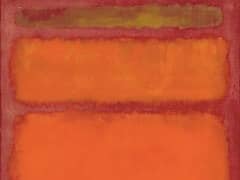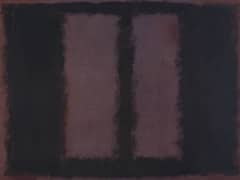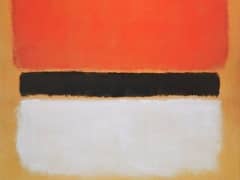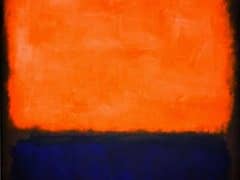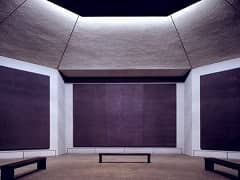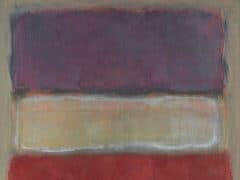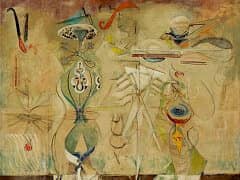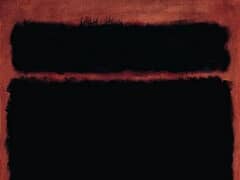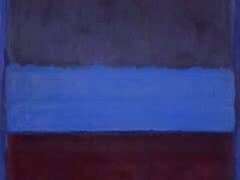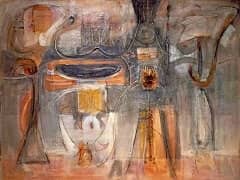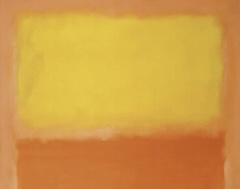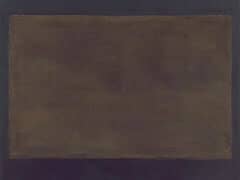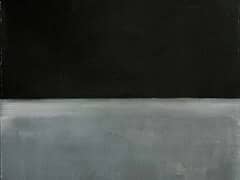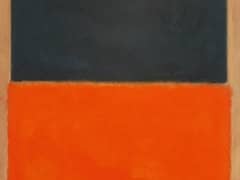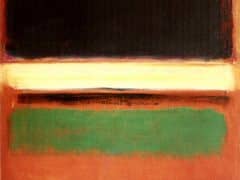Gethsemane, 1944 by Mark Rothko
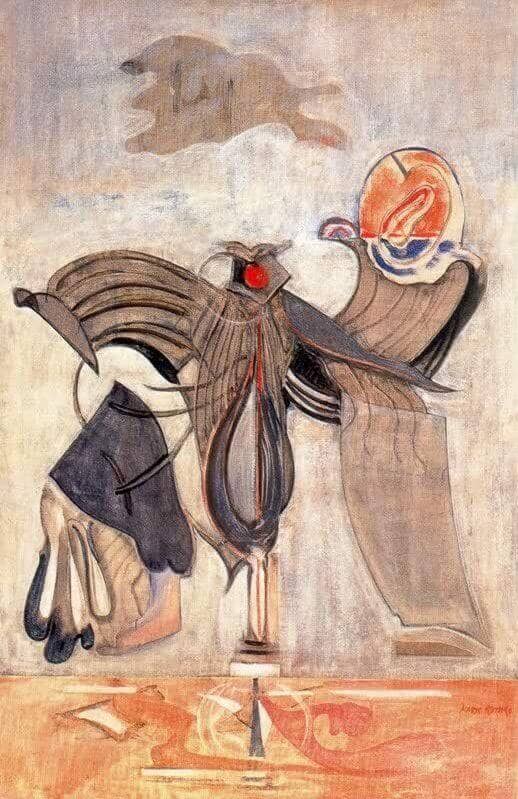
The Old and New Testaments also became a rich source of inspiration, as seen in Gethsemane. The title refers to the garden near Jerusalem that was the scene of the agony and betrayal of Christ.
In his essay The Romantics Were Prompted, Rothko wrote that, for him,
Are not these pictures really abstract paintings with literary titles? If our titles recall the known myths of antiquity, we have used them again because they are the eternal symbols upon which we must fall back to express basic psychological ideas. They are the symbols of man's primitive fears and motivations, no matter in which land or what time, changing only in detail but never in substance....Our presentation of these myths, however, must be in our own terms which are at once more primitive and more modern than the myths themselves--more primitive because we seek the primeval and atavistic roots of the ideas rather than their graceful classical version; more modern than the myths themselves because we must redescribe their implications through our own experience....The myth holds us, therefore, not through its romantic flavor, not the remembrance of beauty of some bygone age, not through the possibilities of fantasy, but because it expresses to us something real and existing in ourselves, as it was to those who first stumbled upon the symbols to give them life.

